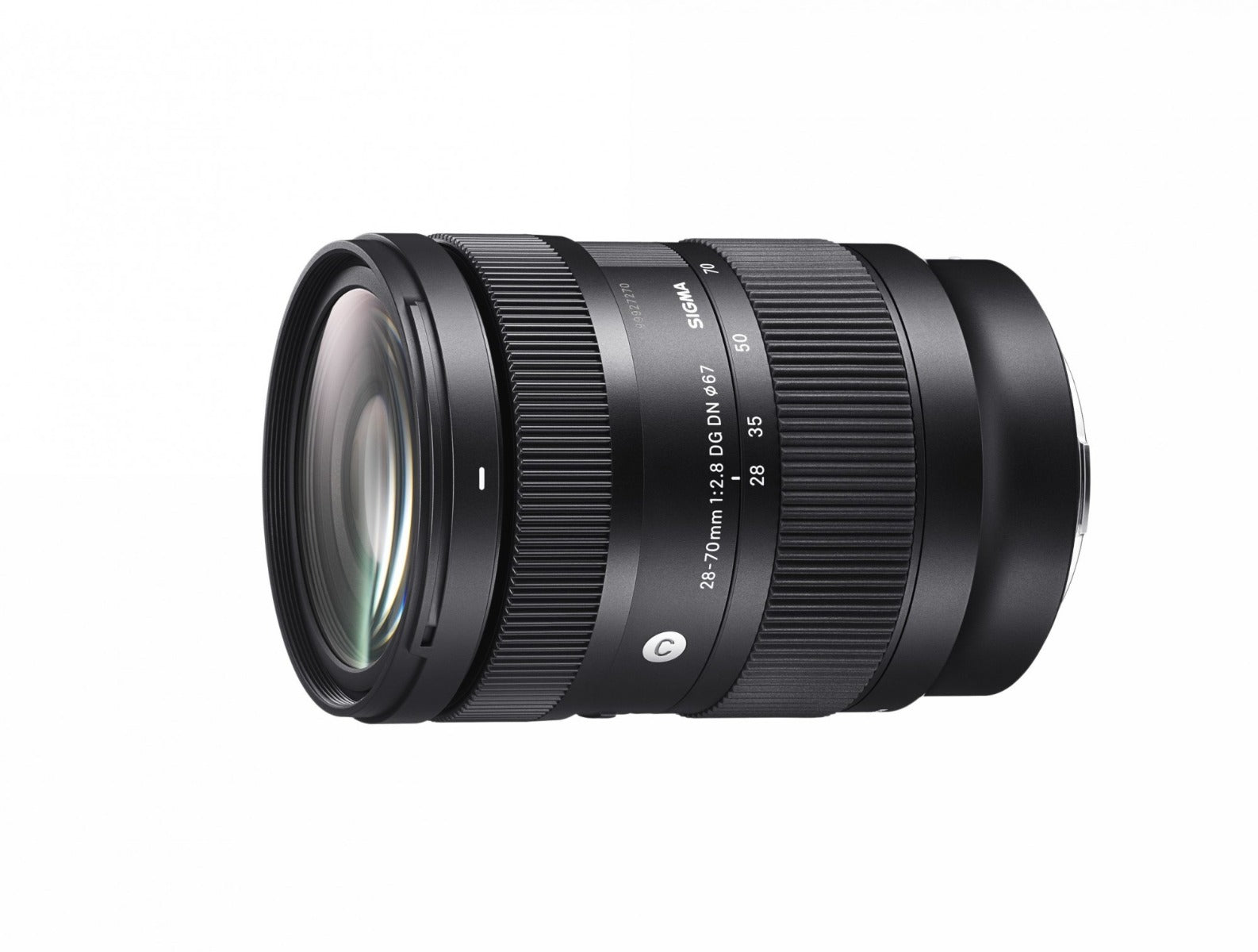Product Description
Sigma 28-70mm f2.8 DG DN Contemporary Lens - Sony E
Design based on SIGMA’s Art line, with the same uncompromising optical performance

The optical design of the SIGMA 28-70mm F2.8 DG DN Contemporary is based on the 24-70mm F2.8 DG DN Art, which is renowned for its outstanding optical performance throughout its zoom range. True to the Contemporary line’s core concept, the 28-70mm F2.8 DG DN Contemporary was developed to offer the right balance of performance and portability, and as such, this large-aperture standard zoom delivers outstanding image quality that rivals Art line lenses in a body light enough for day-to-day use.

Building on state-of-the-art technology, the 28-70mm F2.8 DG DN Contemporary has an advanced optical design that includes three aspherical, two FLD, and two SLD elements. Despite using fewer elements in total than the 24-70mm F2.8 DG DN Art, the design results in a thorough correction of axial chromatic aberration and sagittal coma aberration, which cannot be corrected in-camera, allowing users to create images that are uniformly sharp from the centre to the edges of the frame.

Along with its anti-ghosting design, the use of Super Multi-Layer Coating and Nano Porous Coating means well-controlled flare for high-contrast results in backlit conditions. It also features a water and oil-repellent coating on the front side of the lens.

In short, the SIGMA 28-70mm F2.8 DG DN Contemporary combines all of the key optical features required of a large-aperture standard zoom lens, which are essential for photographing a wide variety of subjects in a range of shooting conditions.

With the addition of the new 28-70mm F2.8 DG DN Contemporary, SIGMA now provides two optimal solutions of standard F2.8 zoom lens for mirrorless cameras ― the new 28-70mm F2.8 DG DN Contemporary achieves remarkable portability and offers the same optical performance, as the existing 24-70mm F2.8 DG DN Art which is for pro-use with the highest levels of performance throughout its focal range.
Payment & Security
Your payment information is processed securely. We do not store credit card details nor have access to your credit card information.




















